![Stanislav Rejthar [cs] (light jacket) of the Slovak Insurgent Air Force with officers and men of the 2nd Czechoslovak Partisan Brigade Stanislav Rejthar 06.jpg](http://upload.wikimedia.org/wikipedia/commons/thumb/9/95/Stanislav_Rejthar_06.jpg/220px-Stanislav_Rejthar_06.jpg)
Slovak partisans were fighters in irregular military groups participating in the Slovak resistance movement, including against Nazi Germany and collaborationism during World War II.
![Stanislav Rejthar [cs] (light jacket) of the Slovak Insurgent Air Force with officers and men of the 2nd Czechoslovak Partisan Brigade Stanislav Rejthar 06.jpg](http://upload.wikimedia.org/wikipedia/commons/thumb/9/95/Stanislav_Rejthar_06.jpg/220px-Stanislav_Rejthar_06.jpg)
Slovak partisans were fighters in irregular military groups participating in the Slovak resistance movement, including against Nazi Germany and collaborationism during World War II.

Slovak partisans were an anti-fascist militia formed immediately following the creation of the First Slovak Republic in 1939, to fight against Nazis and their collaborators. Men and women both fought in the ranks of partisan units, as well as Jews and Christians alike. Slovak partisans had mixed loyalties as many were deeply nationalistic and wanted to maintain an independent Slovak Republic free of fascism, while many others were socialists who forged strong links with the Soviet Union and Soviet partisans. Slovak partisans mainly carried out acts of sabotage. Their largest anti-Nazi military engagement was the Slovak National Uprising in 1944, in which Slovak partisans were aided by the Slovak Army and Soviet partisans. Ján Golian and Rudolf Viest, generals in the Slovak Army, led the uprising, which was eventually crushed by the Germans and their Hungarian, Slovak and Ukrainian collaborators. The most famous Slovak partisan brigade was the M.R.Stefanik brigade led by the Slovak partisan hero Viliam Žingor. [1] [2] With 1300 members, it was the largest partisan brigade, and was fiercely nationalistic yet religiously tolerant, with over 300 Jewish members. After the war this brigade, and its leader, fell into disfavour among Czechoslovak Communist politicians, who accused Gustáv Husák of being a traitor to the Slovak nation and people. Zingor was eventually executed by Husák and the communist government on December 18, 1950. The Janosik brigade was another partisan brigade, which fought in the Tatra Mountains and Orava.
Slovak Jewish partisans made outstanding accomplishments as members of all-Jewish groups. The most famous Slovak Jewish partisan unit was the Nováky Brigade, formed from the inmates of Novaky concentration camp. The Novaky brigade benefited from its strategic locale, as the camp was in a region populated by miners and farmers who had no sympathy for the pro-Nazi government. With the help of these friendly locals, the Novaky brigade made contacts with other partisans, and arranged to receive aid and weapons in the event of an armed uprising. In honour of their service to their country, 166 Jewish partisans were awarded the Order of the Slovak Uprising.
There were many famous Slovak partisans but none more famous than the famous Ján Nálepka, and Viliam Žingor.
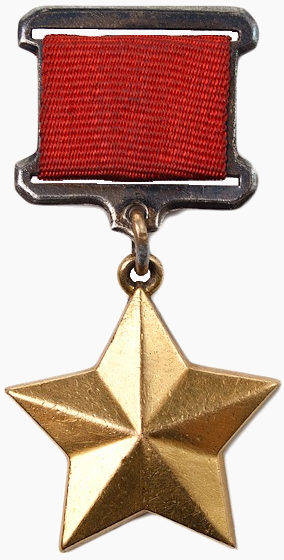
The title Hero of the Soviet Union was the highest distinction in the Soviet Union, awarded together with the Order of Lenin personally or collectively for heroic feats in service to the Soviet state and society. The title was awarded both to civilian and military persons.

Gustáv Husák was a Czechoslovak politician who served as the long-time First Secretary of the Communist Party of Czechoslovakia from 1969 to 1987 and the President of Czechoslovakia from 1975 to 1989.
Soviet partisans were members of resistance movements that fought a guerrilla war against Axis forces during World War II in the Soviet Union, the previously Soviet-occupied territories of interwar Poland in 1941–45 and eastern Finland. The activity emerged after Nazi Germany's Operation Barbarossa was launched from mid-1941 on. It was coordinated and controlled by the Soviet government and modeled on that of the Red Army.
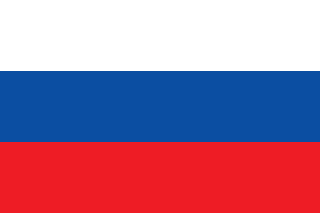
The (First) Slovak Republic, otherwise known as the Slovak State, was a partially-recognized clerical fascist client state of Nazi Germany which existed between 14 March 1939 and 4 April 1945 in Central Europe. The Slovak part of Czechoslovakia declared independence with German support one day before the German occupation of Bohemia and Moravia. It controlled most of the territory of present-day Slovakia, without its current southern parts, which were ceded by Czechoslovakia to Hungary in 1938. The state was the first formally independent Slovak state in history. Bratislava was declared the capital city.
During World War II, resistance movements operated in German-occupied Europe by a variety of means, ranging from non-cooperation to propaganda, hiding crashed pilots and even to outright warfare and the recapturing of towns. In many countries, resistance movements were sometimes also referred to as The Underground.

Ján Golian was a Slovak Brigade General who became famous as one of the main organizers and the commander of the resistance 1st Czechoslovak Army in Slovakia during the Slovak National Uprising.

Jewish resistance under Nazi rule took various forms of organized underground activities conducted against German occupation regimes in Europe by Jews during World War II. According to historian Yehuda Bauer, Jewish resistance was defined as actions that were taken against all laws and actions acted by Germans. The term is particularly connected with the Holocaust and includes a multitude of different social responses by those oppressed, as well as both passive and armed resistance conducted by Jews themselves.

Jewish partisans were fighters in irregular military groups participating in the Jewish resistance movement against Nazi Germany and its collaborators during World War II.

Viliam Široký was a prominent communist politician of Czechoslovakia. He served as Prime Minister from 1953 to 1963, and was also the leader of the Communist Party of Slovakia between 1945 and 1954.

Czechoslovak resistance to the German occupation of the Protectorate of Bohemia and Moravia during World War II began after the occupation of the rest of Czechoslovakia and the formation of the protectorate on 15 March 1939. German policy deterred acts of resistance and annihilated organizations of resistance. In the early days of the war, the Czech population participated in boycotts of public transport and large-scale demonstrations. Later on, armed communist partisan groups participated in sabotage and skirmishes with German police forces. The most well-known act of resistance was the assassination of Reinhard Heydrich. Resistance culminated in the so-called Prague uprising of May 1945; with Allied armies approaching, about 30,000 Czechs seized weapons. Four days of bloody street fighting ensued before the Soviet Red Army entered the nearly liberated city.

The 1st Czechoslovak Partisan Brigade of Jan Žižka, initially known as Ušiak-Murzin Unit, was the largest partisan unit in the Protectorate of Bohemia and Moravia during the German occupation of Czechoslovakia. After its core membership of Soviet-trained paratroopers were dropped into Slovakia in August 1944, the brigade crossed into Moravia and began operations in earnest at the end of 1944. Its focus was guerrilla warfare, especially sabotage and intelligence gathering.

Slovak National Uprising was organised by the Slovak resistance during the Second World War, directed on one hand against the German invasion of Slovakia by the German military, which began on 29 August 1944, and on the other against the Slovak collaborationist regime of the Ludaks under Jozef Tiso. Along with the Warsaw Uprising, it was the largest uprising against Nazism and its allies in Europe.
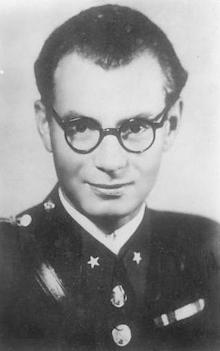
Ján Nálepka was a Slovak captain who organized and led an anti-fascist Slovak partisan detachment in the Soviet Union during World War II.

The Slovak Expeditionary Army Group was an element of the military forces of the Slovak Republic that fought under Nazi German command on the Eastern Front during World War II.
Karol Hochberg was a collaborator during the Holocaust, who led the "Department for Special Affairs" within the Ústredňa Židov, the Judenrat in Bratislava which was created by the Nazis to direct the Jewish community of Slovakia.
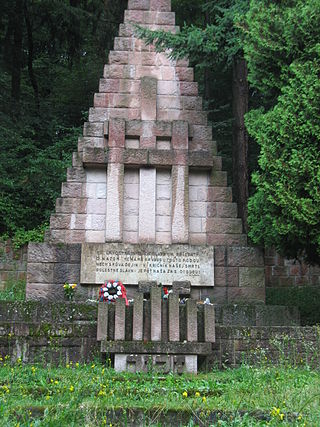
The Kremnička and Nemecká massacres were a series of massacres committed between 5 November 1944 and 19 February 1945 in Kremnička and Nemecká, Slovakia by the Hlinka Guard Emergency Divisions and Einsatzkommando 14 following the suppression of the Slovak National Uprising. During the uprising, many Jews fled to Banská Bystrica, a partisan stronghold; when the town fell, Jews, actual or suspected Slovak partisans, and Romani people captured during roundups were temporarily held in the town's jail. The victims were then trucked to the murder sites at Kremnička and Nemecká, where they were shot. The majority of the 747 people shot at Kremnička were Jewish. Exact figures are not known for the Nemecká massacres, because the bodies were burned, but historians estimate a death toll of around 900, of whom most of the known victims were Jewish or Romani.
Einsatzgruppe H was one of the Einsatzgruppen, the paramilitary death squads of Nazi Germany. A special task force of more than 700 soldiers, it was created at the end of August 1944 to deport or murder the remaining Jews in Slovakia following the German suppression of the Slovak National Uprising. During its seven-month existence, Einsatzgruppe H collaborated closely with the Hlinka Guard Emergency Divisions and arrested 18,937 people, of whom at least 2,257 were murdered; thousands of others were deported to Nazi concentration camps. The victims included Jews, Romani people, actual or suspected Slovak partisans, and real or perceived political opponents. One of its component units, Einsatzkommando 14, committed the two of the largest massacres in the history of Slovakia, at Kremnička and Nemecká.
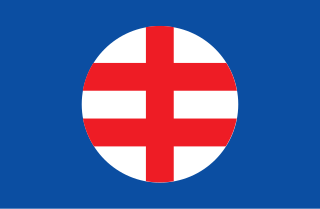
The Hlinka Guard Emergency Divisions or Flying Squads of the Hlinka Guard were Slovak paramilitary formations set up to counter the August 1944 Slovak National Uprising. They are best known for the role they played in murdering Jews, Romani people, and actual or suspected Slovak partisans in conjunction with Einsatzgruppe H, especially for their participation in the Kremnička massacre.

Viliam Žingor was a Slovak partisan, one of the leaders of the Slovak National Uprising.